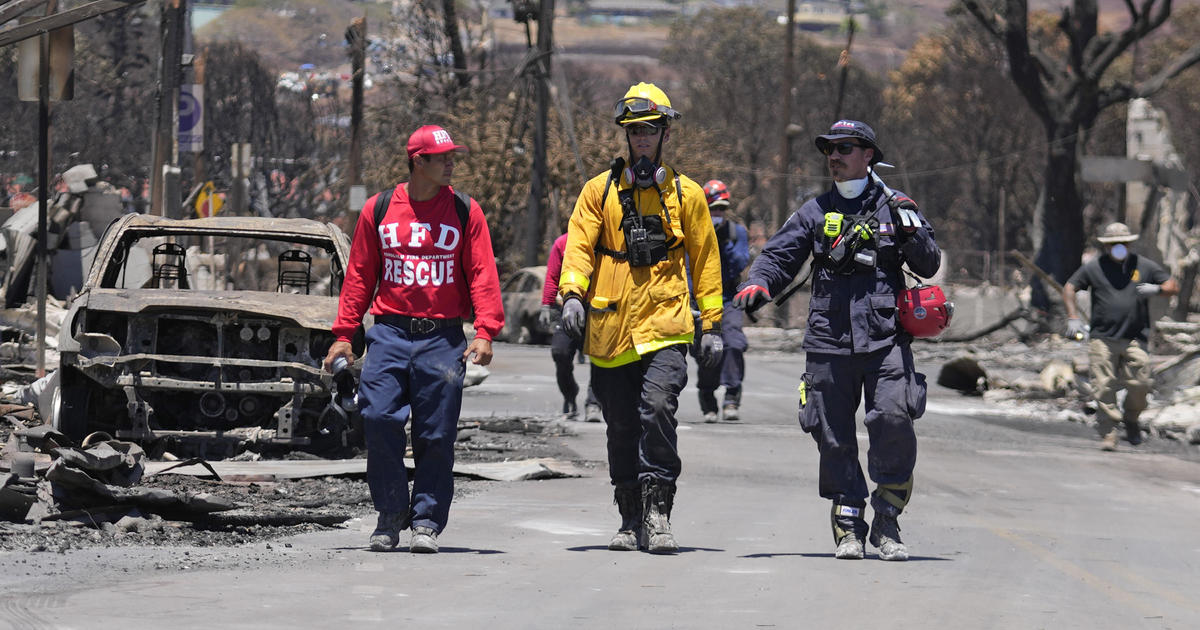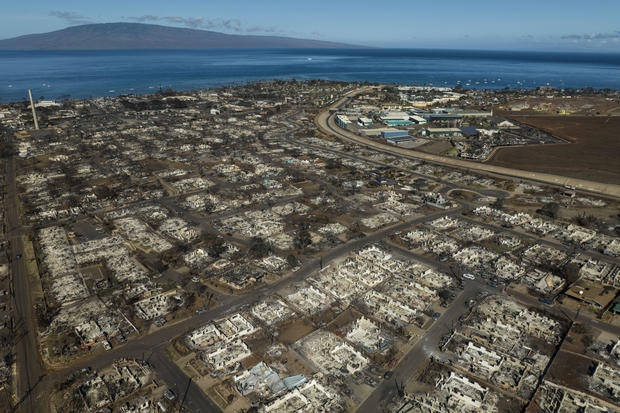President Biden was heading to Hawaii Monday to view the widespread damage from the recent Maui wildfires, meet with survivors and fend off criticism that his administration responded to the disaster too slowly.
There were no details on the itinerary awaiting Mr. Biden and First Lady Jill Biden as they arrive nearly two weeks after ferocious, wind-whipped blazes claimed at least 114 lives — and likely many more.
Federal Emergency Management Agency Administrator Deanna Criswell, who’s scheduled to travel with the Bidens, said on the CBS News broadcast “Face the Nation” Sunday that, “The biggest thing that the president needs to see is just the actual impact. It really feels different when you’re on the ground and can see the total devastation of Lahaina. He’ll talk to some of the families that have been impacted by this and hear their stories.
“He’s really going to be able to, one, bring hope to this community, but also reassure them that the federal government is there,” she said. “He has directed them to bring the resources they need to help them as they begin to start their recovery and their rebuilding process.”
Mr. Biden issued a major-disaster declaration on August 10, two days after the devastating fires, to expedite federal funding and assistance to the area.
But some critics, including disgruntled survivors in Hawaii and some Republicans hoping to face Mr. Biden in next year’s presidential election, say federal aid has been inadequate and poorly organized.
Former President Donald Trump said it was “disgraceful” that his successor hadn’t responded more quickly, though White House spokespersons have said Mr. Biden delayed his trip so he wouldn’t distract officials and rescuers on the ground from recovery efforts.
Criswell, defending the government’s response during appearances on Sunday talk shows, said Mr. Biden’s presence Monday should underscore his commitment to ensuring Hawaii’s recovery.
She said more than 1,000 federal responders were now on the ground in Hawaii, adding that none of them would have to be moved to the U.S. Southwest to help as Tropical Storm Hilary moved through.
Maui residents say the process of recovering lost loved ones — and identifying bodies — has been agonizingly slow.
Rick Bowmer / AP
Hawaii Governor Josh Green said more than 1,000 people remain unaccounted for and that the number probably includes many children.
While search teams have covered 85 percent of the search zone, the remaining 15 percent could take weeks, Green said on “Face the Nation,” adding that the fire’s extreme heat meant it might be impossible to recover some remains “meaningfully.”
Criswell acknowledged that the process could be frustratingly slow, but said the federal government had sent experts from the FBI, the Defense Department and the Department of Health and Human Services to help with the slow and painstaking identification process.
Green conceded he wished sirens would have alerted residents on Maui to evacuate as the blaze quickly spread through Lahaina, calling the response by the island’s now former emergency chief “utterly unsatisfactory to the world.”
“Of course, as a person, as a father, as a doctor, I wish all the sirens went off,” Green told “Face the Nation.”
“The challenge that you’ve heard — and it’s not to excuse or explain anything — the challenge has been that historically, those sirens are used for tsunamis.”
“Do I wish those sirens went off? Of course I do,” he said. “I think that the answer that the emergency administrator from Maui, who’s resigned, was of course utterly unsatisfactory to the world. But it is the case that that we’ve historically not used those kinds of warnings for fires.”
Jae C. Hong / AP
Presidential visits to major disaster zones, while viewed as almost politically mandatory, can carry risks.
When President George W. Bush traveled to Louisiana in 2005 to witness the historic devastation of Hurricane Katrina, critics seized on pictures of him looking out the window of Air Force One while flying over New Orleans to say his arms-length visit lacked empathy.
And when then-president Trump casually tossed rolls of paper towels into a crowd in hurricane-ravaged Puerto Rico in 2017, critics called his gesture cavalier and insensitive.



